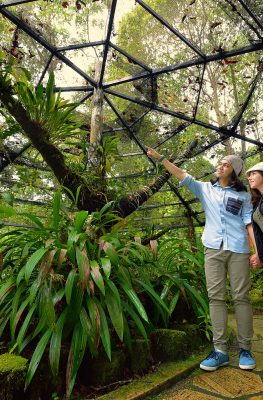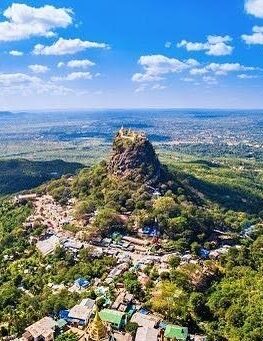Published on July 9, 2015
Bangkok Hospital, Thailand. Image © Bjoertvedt / Creative Commons
With health-related expenses climbing all around the West, you can’t blame seniors for looking around the world for greater bang for their medical buck. Many traveling seniors find it in Southeast Asia, where local governments have set up competitively-priced yet high-quality medical infrastructure accessible to both locals and foreigners alike. (Read more about Finding Health & Wellness in Southeast Asia.)
Exiled by high costs and decreasing quality of care in their home countries, more and more seniors seek treatments in countries like Malaysia and Thailand, combining recovery with a getaway at a nearby beach or temple. Four countries in particular have managed to capture the bulk of wellness tourists’ attention:
Thailand
Thailand was one of the first countries to take advantage of the medical tourism trend, but its entry was almost accidental: when the 1997 economic crisis hit Thailand hard, some of the country’s hospitals decided to sell their services to foreigners, as the local clientele was not buying.
Today, Thailand has become one of the biggest medical tourism destinations in the world, with tourists coming in for cosmetic surgery, cardiology, dentistry, reproductive medicine, and sex reassignment procedures – all at less than half the cost of comparable procedures in the US and EU!
Bumrungrad International Hospital (www.bumrungrad.com) is the country’s leader in medical tourism, having achieved Asia’s first accreditation by the JCI in 2002 and serving over 400,000 foreign patients every year. Bumrungrad has since been joined by other internationally-focused medical centers like the Bangkok International Hospital (www.bangkokhospital.com) and its subsidiary in Phuket (www.phukethospital.com), the latter being a favorite stop for plastic surgery and sex reassignment patients.
Each of these full-service hospitals is a one-stop shop for medical tourists: services can be bundled for lower costs overall. And when travelers need to take time to recover from their procedure, they can simply do so at a Thailand beach resort near the hospital!
Singapore
Medical tourists who want maximum reassurance about their procedure can find it in Singapore, one of the cleanest and most high-tech countries in Southeast Asia. Even ordinary citizens here enjoy the finest healthcare in Asia, as recognized by the World Health Organisation.
Prices for medical treatments in Singapore are about 30 to 50 percent higher than in India or Thailand – its closest competitors in the business – but they still fall far lower than the rates in the West, and offer a technological edge over its competitors to boot.
Singapore’s heavy investment in controversial technologies like stem-cell research has allowed local medical professionals to offer advanced procedures in oncology and osteopathic medicine, among others. Other high-end medical treatments available in Singapore include neurology, cardiology, and organ transplants.
Around 21 hospitals possess Joint Commission International (JCI) accreditation, among them the Mount Elizabeth Hospital (www.mountelizabeth.com.sg), the Raffles Hospital (www.rafflesmedicalgroup.com.sg) and the Specialist Dental Group (www.specialistdentalgroup.com). The Singapore Tourism Board (stb.gov.sg/industries/healthcare) gladly assists foreign travelers looking for information and guidance on medical tourism in their country.
Kuala Lumpur skyline. Image courtesy of Tourism Malaysia, used with permission.
Malaysia
Malaysia began seriously promoting its wellness services to international travelers in 2009, when it set up the Malaysia Healthcare Travel Council (mhtc.org.my) “to promote and facilitate the development of the Malaysian healthcare industry so as to penetrate the global market”. Awards have since begun pouring in: in 2015, the country overall was recognized by the International Medical Travel Journal (IMTJ) Medical Travel Awards as their Medical Travel Destination of the Year.
Travelers to Malaysia tend to seek heart, EENT, gastroenterology, and reproductive treatments. The Gleneagles Hospital (gleneagleskl.com.my/) is Kuala Lumpur’s leading one-stop-shop for medical tourists, while the Imperial Dental Specialist Centre (www.imperialdsc.com/) takes the lead for dental patients from abroad.
Hospitals in the northern city of Penang have also profited from robust state support. Key beneficiaries include the Gleneagles Medical Centre (www.gleneagles-penang.com), the Penang Adventist Hospital (www.pah.com.my) and Island Hospital (www.islandhospital.com) – all of which provide world-class medical services within easy access of the island’s key tourist attractions.
Philippines
The Philippines’ low cost of living, medical professionals’ high degree of competence, and high proficiency in English make the local medical tourism scene an attractive proposition to bargain-chasing patients. Incoming travelers can check out the government-accredited site Philippine Medical Tourism, Inc. (philmedtourism.com) to choose a treatment or look up a medical center.
Travelers who come to the Philippines for medical treatment tend to seek help with cardiovascular issues, ophthalmology, oncology, and ophthalmology. Six hospitals in the Philippines bear the JCI’s Gold Standard of accreditation, among them Saint Luke’s Medical Center (www.stlukesmedicalcenter.com.ph), Asian Hospital and Medical Center (www.asianhospital.com), and Makati Medical Center (www.makatimed.net.ph).






